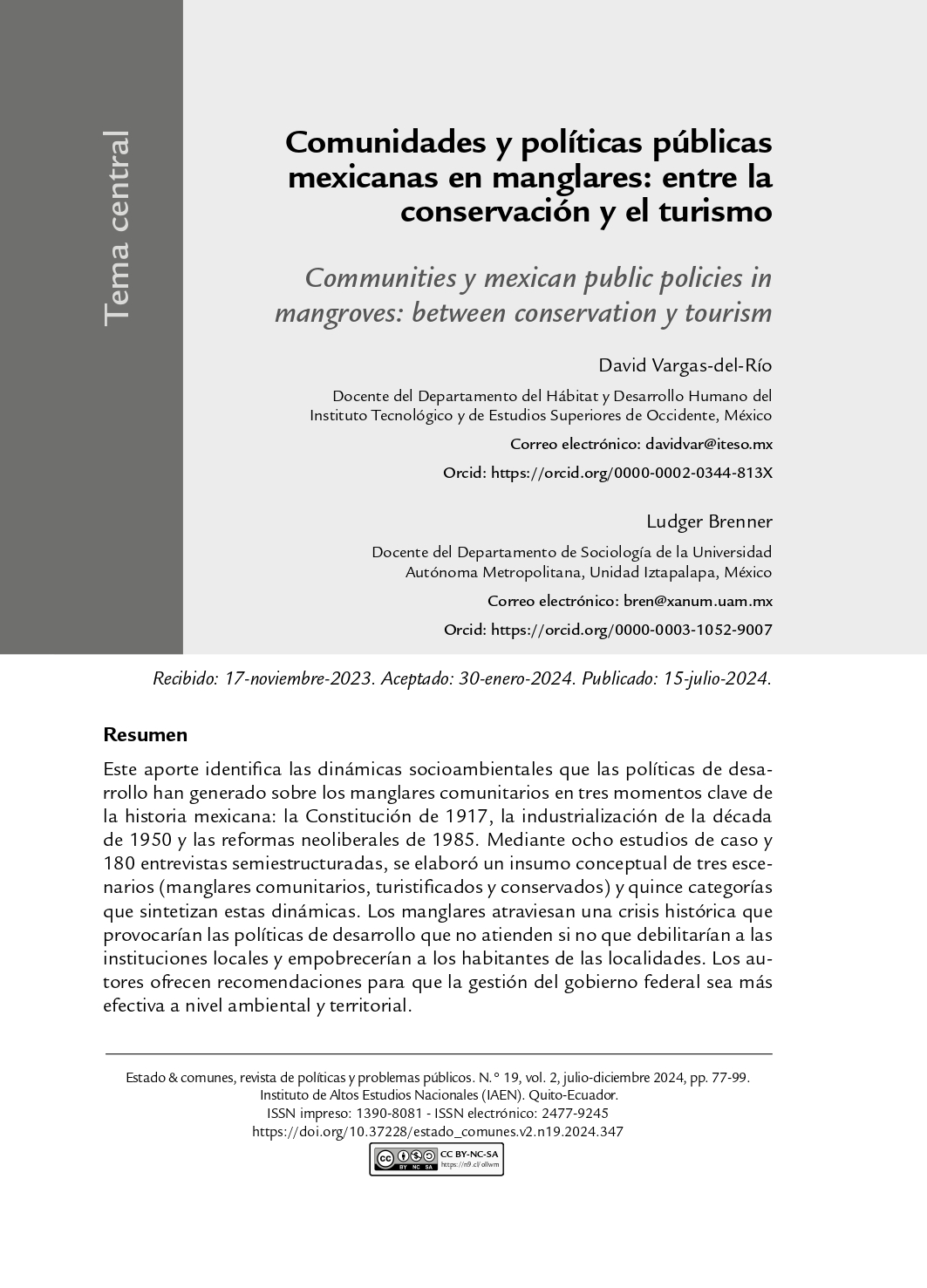Communities y mexican public policies in mangroves: between conservation and tourism
Main Article Content
Abstract
This contribution identifies the socio-environmental dynamics that development policies have generated on community mangroves in three key moments of Mexican history: the 1917 Constitution, the industrialization of the 1950s, and the 1985 neoliberal reforms. Through eight case studies and 180 semi-structured interviews, a conceptual input shapes three scenarios (community, touristified and conserved mangroves) and fifteen categories that synthesize these dynamics. Mangroves are going through a continuous crisis that is arguably provoked by development policies that neglect local institutions and impoverish local inhabitants. This article offers alternatives that the federal government could take into consideration to manage these areas more effectively at the environmental and territorial levels.
Downloads
Article Details
How to Cite
Issue
License
Copyright (c) 2024 David Vargas-del-Río, Ludger Brenner











